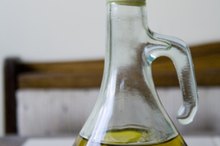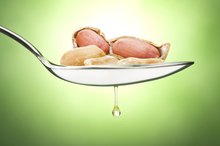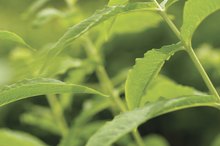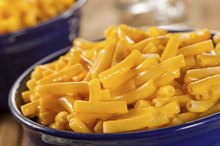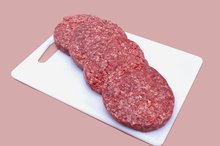What does fact checked mean?
At Healthfully, we strive to deliver objective content that is accurate and up-to-date. Our team periodically reviews articles in order to ensure content quality. The sources cited below consist of evidence from peer-reviewed journals, prominent medical organizations, academic associations, and government data.
The information contained on this site is for informational purposes only, and should not be used as a substitute for the advice of a professional health care provider. Please check with the appropriate physician regarding health questions and concerns. Although we strive to deliver accurate and up-to-date information, no guarantee to that effect is made.
What is the Fat Content of Ricotta Cheese?
Ricotta is a whey cheese made from cow’s milk, either skim or whole 3. However, ricotta is technically not a cheese, as it is made from the liquid whey by-product of the cheese making process. Ricotta cheese is creamy white in color, moist and grainy, and has a slight sweet-tasting flavor. It is often crumbled over salads or fruits such as blueberries. Ricotta cheese is high in fat and calories, but does contain a good amount of protein, calcium and selenium.
Fat Content
Ricotta cheese made from skim milk contains 10 g of total fat and 6 g of saturated fat in 1/2 cup serving. The same size serving of ricotta cheese made from whole milk contains 16 g of total fat and 10 g of saturated fat 3. Ricotta cheese does not contain any trans fats. Looking at percent daily values, based on a 2,000 calorie diet, ricotta cheese made from skim milk accounts for 15 and 31 percent daily value of total fat and saturated fat, respectively 23. Whole milk ricotta cheese contains 25 percent and 51 percent daily value of fat and saturated fat, respectively, in 1/2 cup 3. Apart from the saturated fat content, the total fat content is primarily monounsaturated fat with a marginal amount of polyunsaturated fat. Ricotta cheese made from skim milk contains 3 g of monounsaturated fat and 0.3 g of polyunsaturated fat and ricotta cheese made from whole milk contains 4.5 g and 0.5 g of mono and polyunsaturated fat, respectively 3.
Dietary Reference Intakes
Content of Vitamin K in Olive Oil
Learn More
The Institute of Medicine recommends total fat intake per day for adults should not exceed more than 20 to 35 percent of daily caloric needs. For a 2,000 calorie diet, this would amount to approximately 44 to 78 g of total fat intake per day. The American Heart Association recommends limiting total daily saturated fat intake to less than 7 percent of total caloric intake, which is approximately 16 g of saturated fat 5.
- The Institute of Medicine recommends total fat intake per day for adults should not exceed more than 20 to 35 percent of daily caloric needs.
- The American Heart Association recommends limiting total daily saturated fat intake to less than 7 percent of total caloric intake, which is approximately 16 g of saturated fat 5.
Saturated Fats and Health
Ricotta cheese is high in saturated fat, particularly when made from whole cow’s milk 3. Consuming a diet high in saturated fat is the primary dietary-related cause of high cholesterol levels, according to the American Heart Association 5. In particular, saturated fat raises LDL, or "bad," cholesterol levels, which can accumulate on artery walls and impair blood flow, leading to a condition known as atherosclerosis. If the flow of blood becomes completely blocked, it can lead to a heart attack or stroke.
Unsaturated Fats
What Are the Benefits of Groundnut Oil?
Learn More
Unsaturated fats consist of monounsaturated fats and polyunsaturated fats. They are considered healthy fats because they do not increase the risk of cardiovascular disease like saturated and trans fats. In fact, they may lower total cholesterol and LDL, or bad, cholesterol levels and reduce the risk of heart disease. Individuals do not need to eliminate all fat from their diet, but should choose healthier fats and keep total fat intake low to prevent weight gain.
- Unsaturated fats consist of monounsaturated fats and polyunsaturated fats.
- They are considered healthy fats because they do not increase the risk of cardiovascular disease like saturated and trans fats.
Related Articles
References
- Food.com: Ricotta Cheesehttp://www.food.com/library/ricotta-cheese-291
- American Heart Association: Know Your Fats
- MayoClinic.com: Dietary fats: Know which types to choose
- National Cancer Institute's Division of Cancer Control and Population Sciences. Table 1. Top Food Sources of Saturated Fata Among U.S. Population, 2005-2006 NHANES. Updated April 20, 2018.
- U.S. Department of Agriculture. FoodData Central.
- Whitney EN, Rolfes SR. Understanding Nutrition. Stamford, CT: Cengage Learning; 2016.
Writer Bio
Jason Dority has been writing health-related articles and developing community resources for healthier lifestyles since 2007. He currently works for the Indiana University School of Medicine's Diabetes Translational Research Center. Dority holds a Master of Science in biology from Indiana University.
